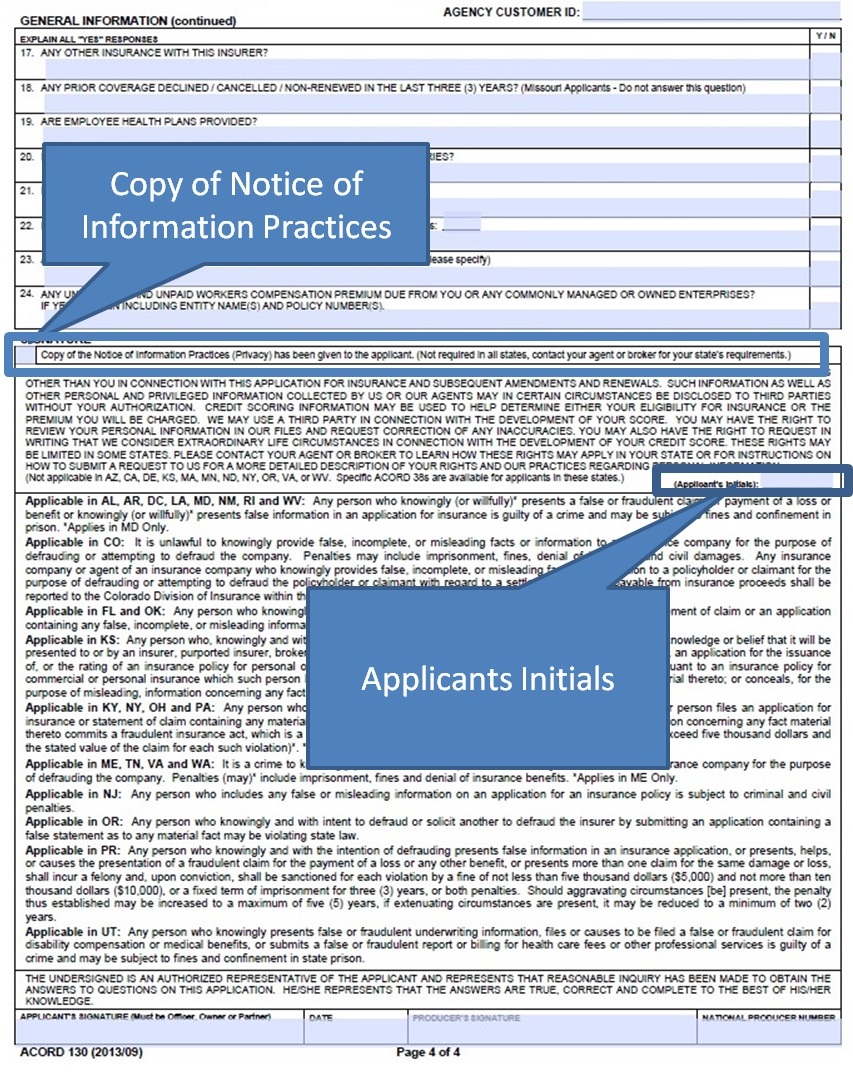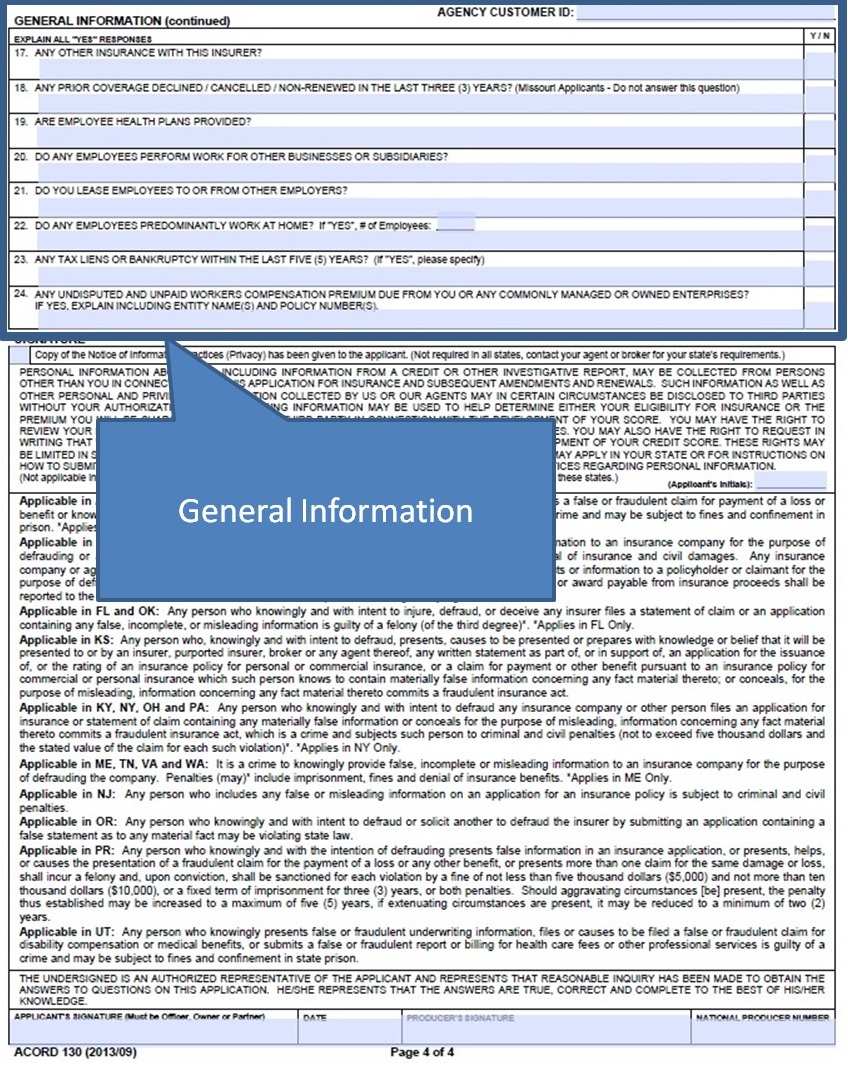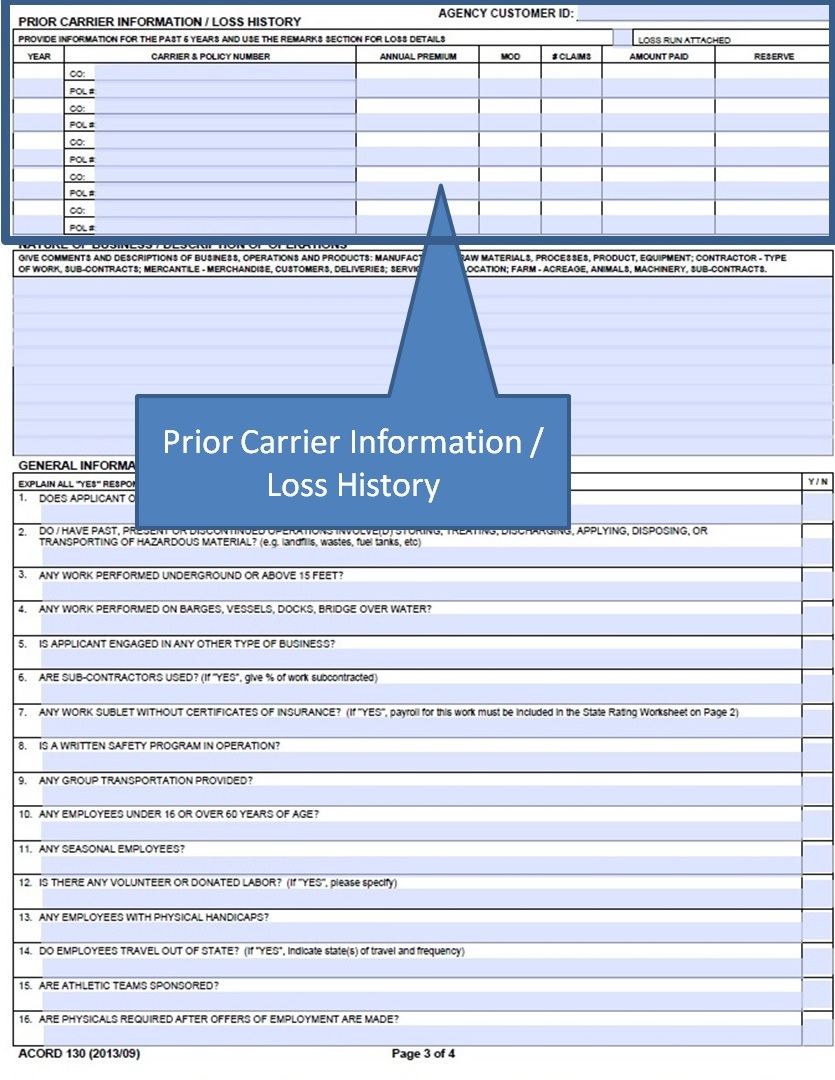How to Complete the ACORD 125 General Information Section
From time to time the questions in this section change. I will discuss the questions present as of this writing on May 30, 2014.
First you should enter a Y for YES or an N for NO in the far right hand column of all questions.
If the answer to any question is NO, you do not need to worry about completing any of the rest of the questions in that section.
If the answer to any question is YES, you will need to complete the other questions in that section and offer some type of explanation in the remarks section on this page. If you need more space for remarks you should use the ACORD 101 form.
SUBSIDIARY
Question 1a and 1b ask if the applicant is a subsidiary or owns subsidiary companies. List the companies and the percentage of ownership.
SAFETY PROGRAM
Check each box which applies. Insurance underwriters love formal safety programs. You should give as much information as possible here. This information is very useful in convincing underwriters to consider credits to reduce your customer's premium.
EXPOSURE TO FLAMMABLES, EXPLOSIVES, CHEMICALS
List any used in the operation of the business.
ANY OTHER INSURANCE WITH THIS COMPANY
List the line of business and policy number of in force policies only.
It is always an excellent idea to place all lines of business possible with the same carrier. This eliminates arguments about which carrier should pay for any specific claim.
ANY POLICY OR COVERAGE DECLINED, CANCELLED, OR NON-RENEWED
The time period is over the past three years.
Check all the check boxes which apply.
This is a very bad sign. If the reason for any of these actions has been addressed and changed, it will be very important to explain that information here.
ANY PAST LOSSES OR CLAIMS RELATED TO SEXUAL ABUSE OR MOLESTATION ALLEGATIONS, DISCRIMINATION OR NEGLIGENT HIRING
If the causes of these actions has been effectively addressed it will be extremely important for you to explain those in detail.
INDICTED OR CONVICTED OF ANY DEGREE OF CRIME. ETC
This is one of those questions you, the agent signing this form, can go to jail for if you mis-represent these issues. You may want to run a background check if you have any reason to question this at all.
UNCORRECTED CODE VIOLATIONS
Explain in detail. If corrections are in progress, explain that process in detail.
FORECLOSURE, REPOSSESSION, BANKRUPTCY
Explain in detail, including any corrections made or in progress of being made.
JUDGEMENT OR LIEN
Explain in detail.
BUSINESS PLACED IN TRUST
This is not always a bad thing. It could be in a trust due to Estate issues. The positive thing to show is continuity in successful management.
FOREIGN OPERATIONS, FOREIGN PRODUCTS DISTRIBUTED IN USA, OR US PRODUCTS DISTRIBUTED IN FOREIGN COUNTRIES
How would you treat digital products or services? What if the servers hosting these services are in the US but the services are used in other countries? What if the servers hosting the digital products or services are hosted in foreign countries but the services or products are only used in the USA. What if the servers hosting the digital products or services are hosted who knows where when using services such as Amazon's cloud as a host?
DOES APPLICANT HAVE OTHER BUSINESS VENTURES FOR WHICH COVERAGE IS NOT REQUESTED
Even if these ventures are not insured elsewhere, you need to disclose those ventures here.
ACORD FORMS EMAIL TUTORIALS
We offer a free daily or weekly email ACORD Forms Tutorial series. You can sign up below...
Sign Up for a Daily ACORD Forms Tutorial Email
Sign Up for a Weekly ACORD Forms Tutorial Email





















